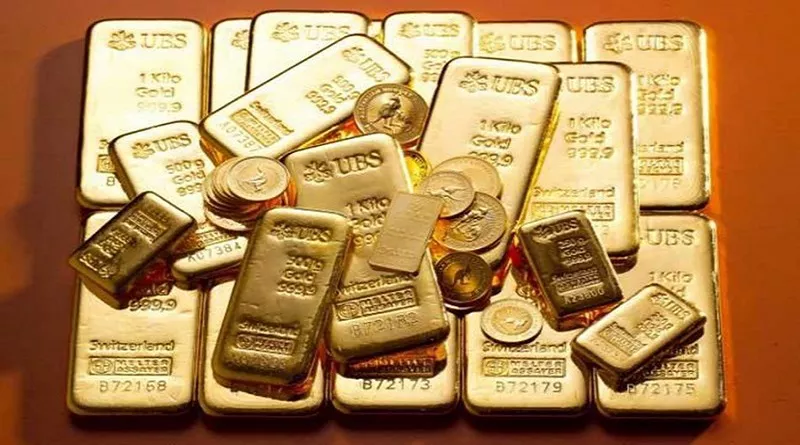Gold prices found themselves navigating a mixed path on Tuesday, as they retained their recent gains, with a watchful eye on developments in the Israel-Hamas conflict. Additionally, market attention shifted towards a series of critical U.S. economic data releases scheduled for later this week.
The immediate demand for gold remains robust, with spot prices climbing due to the Israel-Hamas conflict, bolstering the appeal of safe-haven assets. However, a decrease in gold futures indicates some caution among investors, particularly regarding the possibility of higher, sustained interest rates.
Nonetheless, a decline in the U.S. dollar and yields from their recent highs provided some respite for gold prices.
As of the latest data available, spot gold registered a 0.1% increase, reaching $1,975.71 per ounce. Meanwhile, gold futures, with contracts expiring in December, saw a marginal 0.1% dip, settling at $1,986.55 per ounce as of 00:14 ET (04:14 GMT). Both of these price indicators remain in close proximity to near three-month highs.
In recent weeks, gold has experienced remarkable gains, driven primarily by the Israel-Hamas conflict, which pushed investors toward safe-haven assets. Observers are now closely monitoring the situation for any signs of further escalation, although diplomatic efforts by several world powers have seemingly prevented a major intensification of hostilities.
Yields and the dollar, before the release of economic data and Fed cues, have exhibited some retracement from multi-month highs this week. Market participants are currently preparing for a series of crucial economic signals set to emerge in the coming days.
One such data point is the U.S. Purchasing Managers’ Index (PMI) data scheduled for later on Tuesday, which is expected to provide insights into business activity amid elevated interest rates and persistent inflation.
Federal Reserve Chair Jerome Powell is slated to deliver a speech on Wednesday, offering potential guidance on the direction of monetary policy. Notably, Powell recently reaffirmed the Federal Reserve’s intention to maintain higher interest rates for an extended period and left open the possibility of another rate hike later this year.
Powell’s speech precedes a Federal Reserve meeting scheduled for the following week, where it is widely anticipated that the central bank will keep interest rates steady.
Later this week, attention will shift to third-quarter U.S. Gross Domestic Product (GDP) data, with Personal Consumption Expenditures (PCE) inflation data, which the Federal Reserve regards as its preferred inflation gauge, concluding the week on Friday. Signs of economic resilience and persistent inflation would further underscore the Federal Reserve’s commitment to higher rates, potentially undermining gold’s appeal.
Gold’s safe-haven demand may also wane if U.S. economic growth maintains its stability.
In the realm of industrial metals, copper prices experienced a slight uptick on Tuesday, recovering from nearly one-year lows. This recovery in the red metal’s value was partly influenced by diplomatic dialogues between U.S. and Chinese officials, which traders believe may lead to improved relations between the world’s two economic powerhouses. Nevertheless, persistent concerns over China’s property market and other headwinds have placed limitations on substantial gains.
As of the latest available data, copper futures with December expiration recorded a 0.4% increase, reaching $3.5927 per pound.
Copper enthusiasts will be closely monitoring U.S. economic indicators this week, as any indications of manufacturing resilience may signify increased demand for copper. However, with economic conditions exhibiting signs of deterioration on a global scale, the overall outlook for copper remains uncertain.


